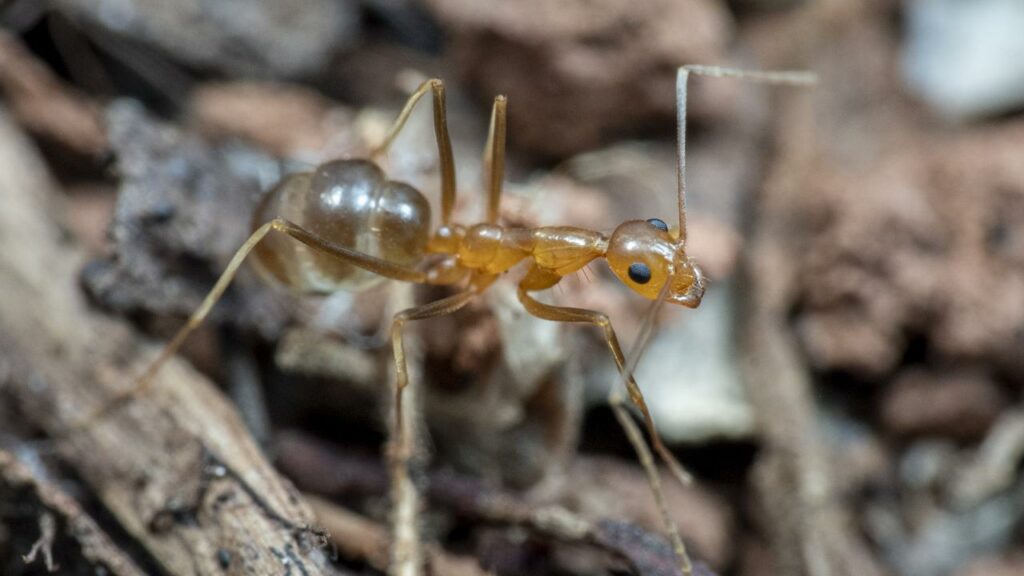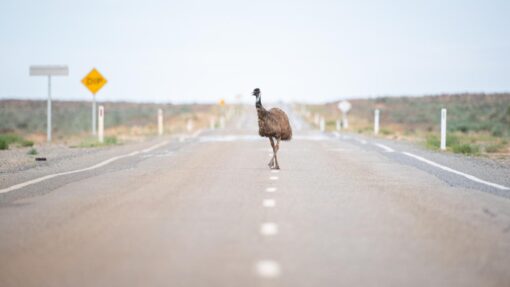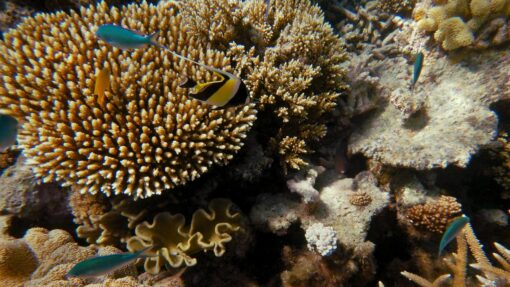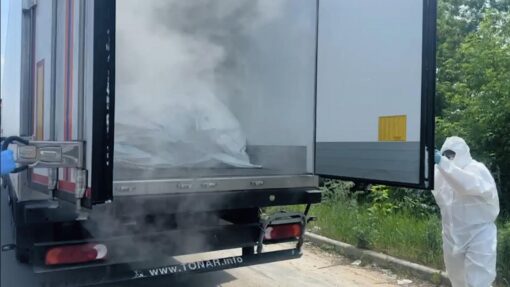Ant invaders wage war on Aussie lizards
Tracey Ferrier |

Yellow crazy ants can essentially wipe out some native lizards and researchers fear what the acid-spraying invader might do to Australia’s smallest frogs.
A new study has detailed what happened to populations of two small skink species after imported crazy ants marched into Queensland’s Wet Tropics World Heritage area.
Four-fingered shadow skinks and rainforest litter skinks essentially vanished in areas where ants reached high density levels.
The results show how crucial it is to continue baiting and eradication efforts within the biodiversity hotspot, scientists say.
“If you don’t, and you let ants get to high density, you see these impacts,” says James Cook University tropical biologist Conrad Hoskin.
“We only studied three skinks and two of them were impacted, let alone the other impacts that are going to happen.
“They were extremely rare, to the point of being almost absent. We’re not sure exactly why but it’s either harassment or predation of the skinks or their even smaller babies, or an effect of the ants stripping the forest of the food skinks eat.”
Dr Hoskin is certain the ants have had many as yet undocumented impacts on the World Heritage area.
“Skinks are a really important part of the food chain in this environment, most snakes and predatory birds in that area are feeding on skinks,” he says.
Dr Hoskin has grave fears for what might happen if the ants move in on Australia’s smallest frogs – 13 microhylid species found only in the Wet Tropics World Heritage area.
Five of the 13 are critically endangered. And some species are confined to a single mountain top.
They are particularly vulnerable due to their habit of laying their eggs in the damp leaf litter on the forest floor. The males then sit on the eggs, like a bird, waiting for their babies to emerge.
Dr Hoskin says they don’t stand a chance against yellow crazy ants, which attack in swarms and squirt out formic acid that can blind and kill their prey.
“Some of these frog species are only a bit over one centimetre long for an adult. If you look at the fingernail on your pinky, an adult would fit on there. So imagine how small their babies are. They are like bread-crumb size.”
JCU Associate Professor Lori Lach is an expert on yellow crazy ants and says efforts to eradicate them from the Wet Tropics World Heritage area have largely been successful.
But she says everything will ride on whether the Wet Tropics Management Authority can convince the Queensland and federal governments to provide ongoing funding.
“Getting rid of the first 99 per cent of any invasive ant species is really the easy part. It’s really keeping the funding, keeping the resources there, to see it through until that last one per cent is gone.”
She said it was impossible to overstate the importance of ongoing, follow-up surveys to ensure no remnant colonies can take hold again.
“You really need to see it through to the end, and have enough funding to be able to do that.”
The Wet Tropics Management Authority has told AAP it’s in a holding pattern, waiting to hear from both levels of government about additional funding. AAP has sought comment from both governments.
The yellow crazy ant is one of the world’s worst invasive species. They can form huge super-colonies containing thousands of queens and have worker ant densities of up to 20 million ants per hectare.
They were first detected in Australia in northeast Arnhem Land in the Northern Territory in 1980 and have since spread to the Wet Tropics and other locations across the country.
Happily the JCU study found the baits used to kill yellow crazy ants did not affect the three skinks that were part of the study.
The third skink species – the only one not affected by the ants – was the red throated skink, which faster, slightly bigger and lives in slightly hotter areas, giving it some kind of advantage that got it out of trouble.
The study has been published in the journal Biodiversity and Conservation.
AAP


